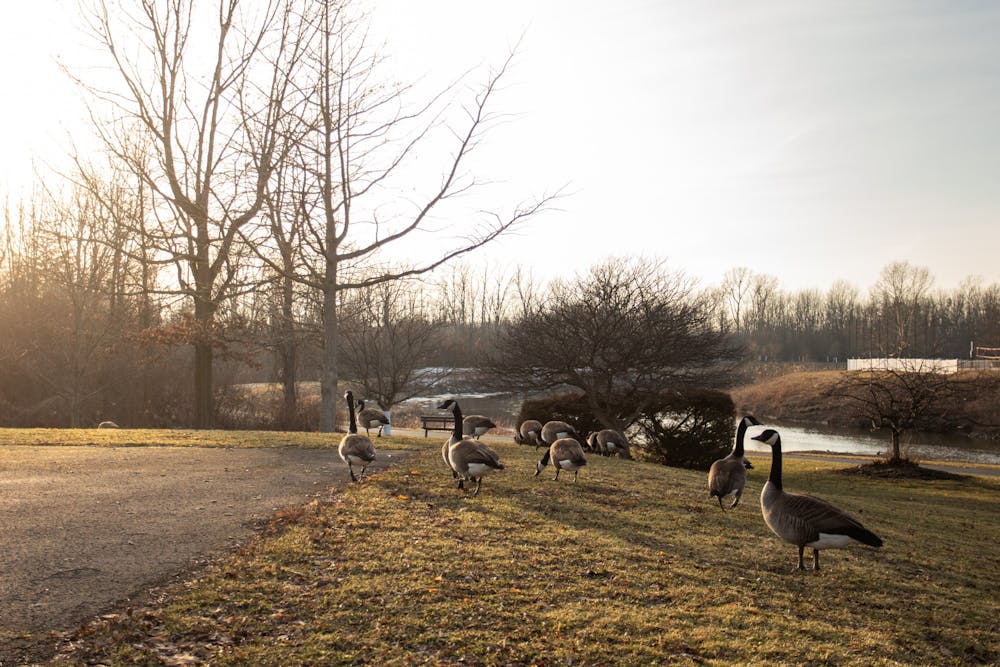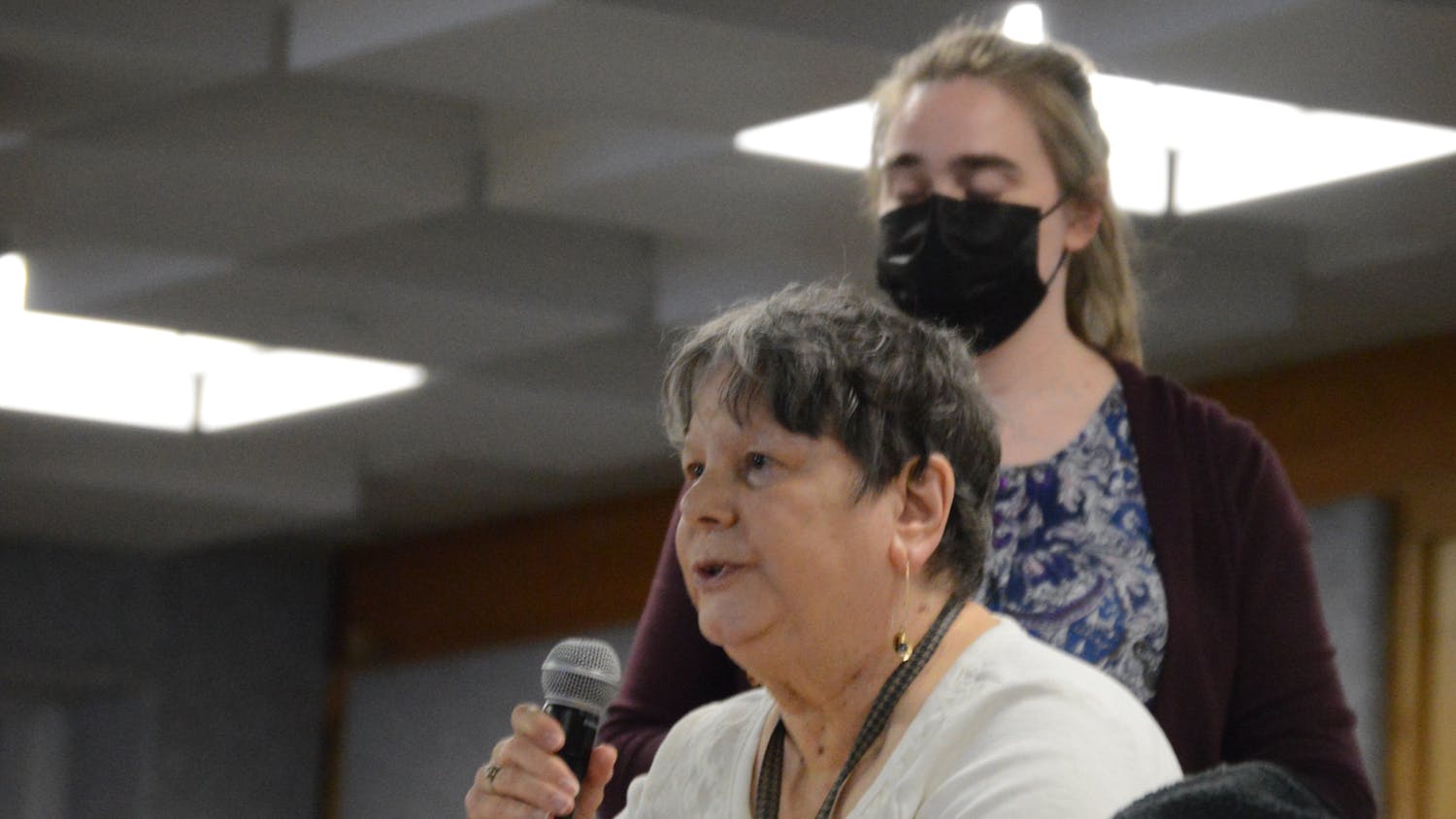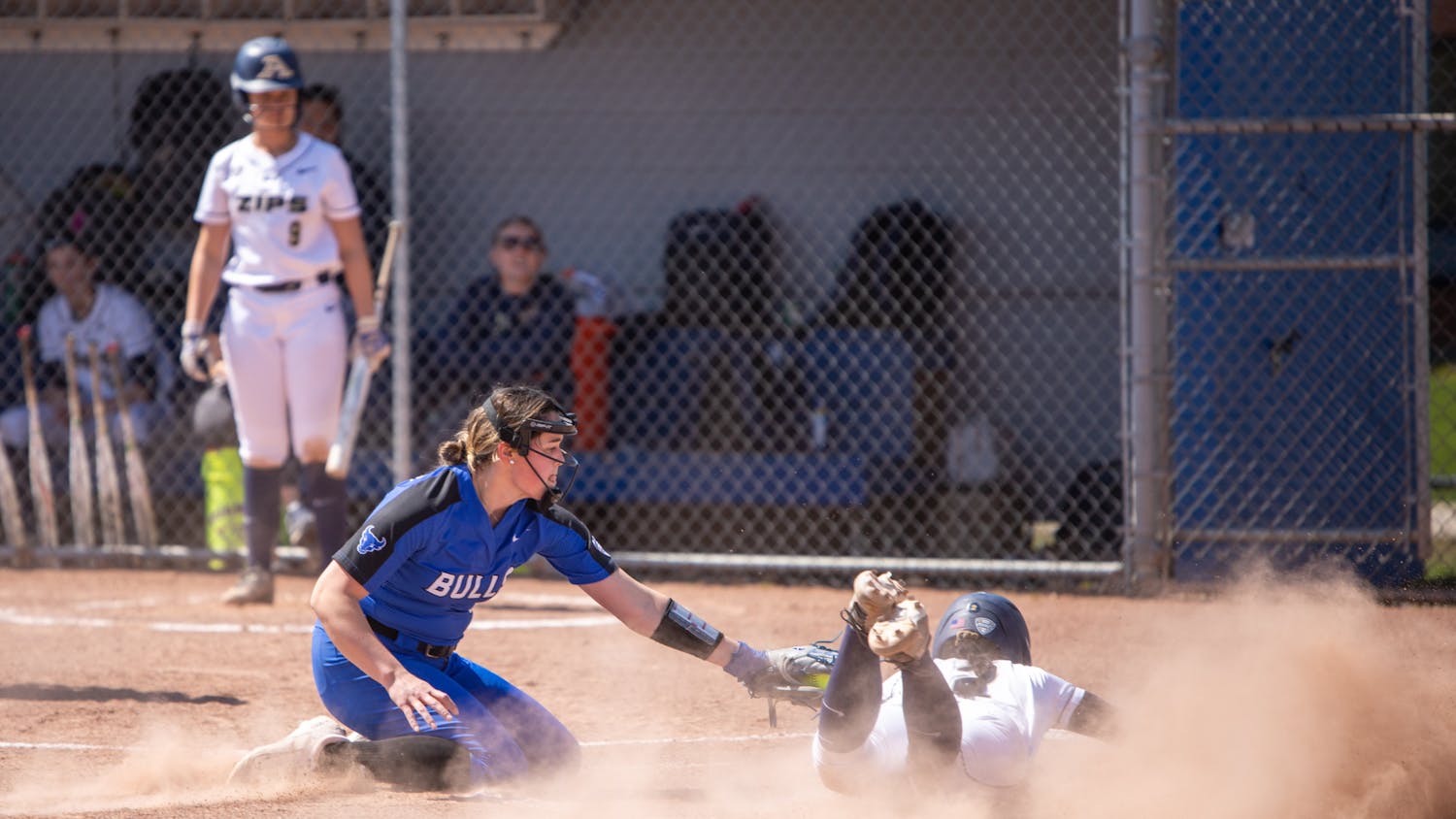In a matter of weeks, the ice will thaw and avian bleating will fill the air as students and geese flock in tandem to signal the arrival of spring.
But this semester, the honking hallmarks of warmer days echo with the anxiety of public health officials.
A record-breaking outbreak of bird flu, or H5N1 avian influenza, is sweeping poultry, wild birds and mammal populations across the globe. Over 58 million poultry across 47 states have been killed due to the outbreak in the U.S. as of Feb. 20, a record death toll, according to the U. S. Department of Agriculture (USDA).
Beyond poultry, the current strain of bird flu is already “well-adapted” to spread among wild birds, according to Dr. Tim Uyeki, Chief Medical Officer of the Influenza Division at the CDC.
The World Organization for Animal Health estimates that more than 50,000 wild birds, including geese, have died from the current strain of bird flu since October 2021.
As of March 1, no cases of H5N1 have been reported among goose populations in Western New York, according to the CDC, but Canada geese in nearby Monroe and Livingston counties have been infected.
The university said it will “continue to monitor” the bird flu and echoed assessments of the outbreak as a “public health concern” with low “immediate health risk,” in an email to The Spectrum.
“At this time, there are no planned changes to health and safety guidelines or geese management policy,” the university said. “This may change as the situation evolves.”
With the spring semester and surging geese populations on campus in tow, students spoke to The Spectrum about the bird flu, coexistence with geese and pandemic preparedness.
Dr. Thomas Russo, chief of the Division of Infectious Diseases in the UB Department of Medicine, isn’t worried — yet.
“Presently, there are no grounds for panic,” Russo said, citing a lack of evidence of “efficient transmission” to and between humans.
According to the CDC, bird flu is transmissible through direct contact with infected animals or their bodily fluids — including saliva, mucus or feces — and prolonged exposure to a “contaminated environment.”
The CDC suggests avoiding “direct contact” with wild birds and poultry as well as any “surfaces that appear to be contaminated with feces from wild or domestic birds.”
The university says it considers geese “a public nuisance on campus.” New York State houses over 200,000 resident Canadian snow geese, and each spring carries in a surge of over 600 migrant geese onto UB’s campus, according to the Department of Environmental Conservation.
Borders on Patrol, a company hired in 2016 to contain goose presence on campus with specially trained border collies, will continue patrolling the premises, the university confirmed.
Logan Stafford, a junior mathematics major, says that tiptoeing around the geese and their excrement won’t be a vast departure from his current daily commute.
“I just try to walk where there isn’t anything there,” he said. “I’m not really petting them so I’m not too worried about it — but I get the concerns.” At the end of the day, Stafford says he’s “pro-geese.”
“I’m actually a bird owner, so I do like birds,” Stafford said, lamenting the bird flu outbreak. “It sucks to see it, but it sucks to see it happen to any animal.”
Ysai Huebner shares an appreciation for UB’s geese but wishes the university would clean up after them, especially in the wake of the avian flu outbreak.
“I don’t mind that they’re here, but I wish they [the university] would wash the sidewalks.” Huebner, a sophomore political science major, said.
Fellow sophomore and psychology major Mimi Joseph agrees.
“The poop is annoying,” Joseph said. “But I think it’s nice to have a little bit of life around on campus. It makes me feel less depressed.”
The chances of the bird flu being able to spread between humans are low. A study of an October bird flu outbreak in a Spanish mink farm uncovered an adaptation optimized for mammal transmission, according to The New York Times. The study noted the likelihood of transmission from wild bird carriers and found evidence of mammal-to-mammal spread.
Russo, though, pointed out that none of the farm workers, who had “close, unprotected contact with the minks,” contracted the virus.
In general, human infection is uncommon but potentially fatal, with a 53% mortality rate in just 868 globally-reported cases between January 2003 and November 2022. (That high mortality rate may be because infected individuals without serious symptoms never sought testing, according to The Seattle Times.) Eight global human infections occurred within the past year, including one U.S. case in April, according to the CDC.
The World Health Organization (WHO) assessed the global outbreak as “low- risk” for humans but emphasized a need for “vigilance” in a press briefing earlier this month.
“We need to be just vigilant to make sure that the spread in animals is contained because the more the virus circulates in animals, the higher is the risk for humans,” Dr. Sylvie Brand, WHO Director for Epidemic and Pandemic Preparedness and Prevention, said. “The virus circulating in animals can evolve to forms that are more transmissible.”
But some students are still worried about the outbreak escalating. Joseph and Huebner were both high school juniors when COVID-19 broke into pandemic status in 2020.
“I wasn't happy in school, so when I heard we could stay home and do all our classes, I was actually over the moon,” Huebner said. “But then a year passed and I was still at home. There was just nothing going on in my life.”
Joseph echoed that sentiment, recounting the social toll of lockdown as her final years of high school slipped by.
“I wanted to experience the rest of high school. I wanted to walk back to school with my friends. I wanted to hang out a few more times,” Joseph said. “I’d lost two friends. We all lost friends. People's friendships were breaking apart.”
Semesters into post-lockdown campus life at UB, Huebner doesn’t want to imagine a return to familiar pandemic pains.
“If we went back, I would just kind of miss being forced to do things, being forced to meet people -- even if sometimes I feel like I don't want to,” he said.
Bryan Fernandez, a sophomore media study major and current RHA president at Hadley apartments, says that pandemic isolation continues to be an obstacle to engaging students and community-building on campus. He bristled at the prospect of another lockdown at the hands of bird flu, recounting the decisions that led to COVID-19 breaking out into a pandemic.
With the bird flu outbreak in flux, Fernandez hopes that a vigilant international and university response will spare a pandemic-weary student population from reliving the worst years of COVID-19.
“It could have been preventable if the proper steps had been initiated,” Fernandez said. “Hopefully we’ve learned our lessons because taking a few days to come up with measures is a lot better than sacrificing potentially two or three years like last time.”
Kyle Nguyen is an investigative reporter and can be reached at kyle.nguyen@ubspectrum.com

Kyle Nguyen is a senior news/features editor at The Spectrum.





